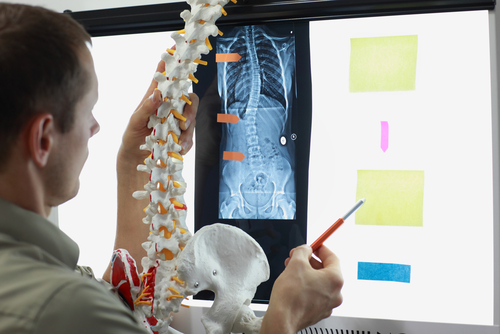Scoliosis Surgery Improves Quality of Life in Children with Cerebral Palsy, Study Suggests

Surgical treatment for scoliosis significantly improves the quality of life in children with cerebral palsy, outweighing the risks of surgery-related complications, a study suggests.
Up to 35 percent of cerebral palsy patients with severe motor disability are at increased risk of developing a progressive spinal deformity that cannot be stopped by wearing a brace.
Spinal fusion surgery — a procedure that fuses together painful vertebrae so that they heal into a single solid bone — can be performed to prevent scoliosis from progressing, but the true risk-benefit ratios are difficult to quantify in complex clinical contexts like cerebral palsy.
In the study “Assessing the Risk-Benefit Ratio of Scoliosis Surgery in Cerebral Palsy: Surgery Is Worth It,” researchers determined the long-term benefits and risks of having scoliosis surgery in children with cerebral palsy. The report was published in The Journal of Bone & Joint Surgery.
A total of 69 children with cerebral palsy with a mean age of 13.4 years were enrolled. The children underwent spinal fusion for scoliosis between 2008 and 2011 and were followed up for at least five years.
All of the children were severely disabled, and the majority (88.4 percent) were at level V of the Gross Motor Function Classification System, a scale from I to V with V as the most severe. The other children in the study were at level IV.
The primary outcome measured was health-related quality of life assessed before surgery and at one, two, and five years after surgery.
Quality of life was primarily determined using a questionnaire filled out by parents or other caregivers, called the Caregiver Priorities and Child Health Index of Life with Disabilities (CPCHILD). This is a validated tool specifically designed for children with severe cerebral palsy.
The questionnaire contains 37 questions about personal care and activities of daily living, positioning, transferring, mobility, comfort, emotions, communication and social interaction, general health, and overall quality of life.
Caregivers’ answers showed that significant improvements in personal care, positioning, comfort, and overall quality of life were seen one year after surgery, and persisted for the entire five years of follow-up.
Ninety-two percent of caregivers reported an improvement in the quality of life of their child at the first year after surgery, whereas only 6.3 percent reported deterioration. The remaining 1.7 percent reported no change in the child’s quality of life.
As expected, complications from surgery were common, affecting 46 percent of the patients during the first year post-surgery. The most frequent complications were pneumonia, surgical site infections, and pancreatitis.
However, first-year complications had very little or no impact on the patients’ and caregivers’ quality of life. There was weak or no correlation between the occurrence or number of complications and the quality of life reported on the questionnaires.
“Scoliosis surgery in patients with CP leads to a significant improvement in health-related quality of life, which is maintained five years following surgery,” researchers wrote. “The substantial complication rate does not correlate with health-related quality of life changes postoperatively, suggesting that the benefits of surgery outweigh the risks in this fragile population.”
The benefits of scoliosis surgery for cerebral palsy patients have been debated by some researchers, particularly in light of the substantial risk of complications.
The research team believes that these results provide encouraging data that may help patients and healthcare professionals make a more informed decision when considering surgery.
“We are encouraged that the results of this multi-center study will provide patients, caregivers, and treating surgeons some guidance when faced with the decision of moving ahead with surgery,” Firoz Miyanji, MD, of British Columbia Children’s Hospital and first author of the study, said in a press release.
Paul Sponseller, MD, of Johns Hopkins Children’s Center and coauthor of the study, also said, “I am pleased to see that the data could provide useful information which helps patients with CP and their parents make good decisions. These families place an enormous amount of trust in our recommendations and this helps to give the advice a more solid basis, which they deserve.”


